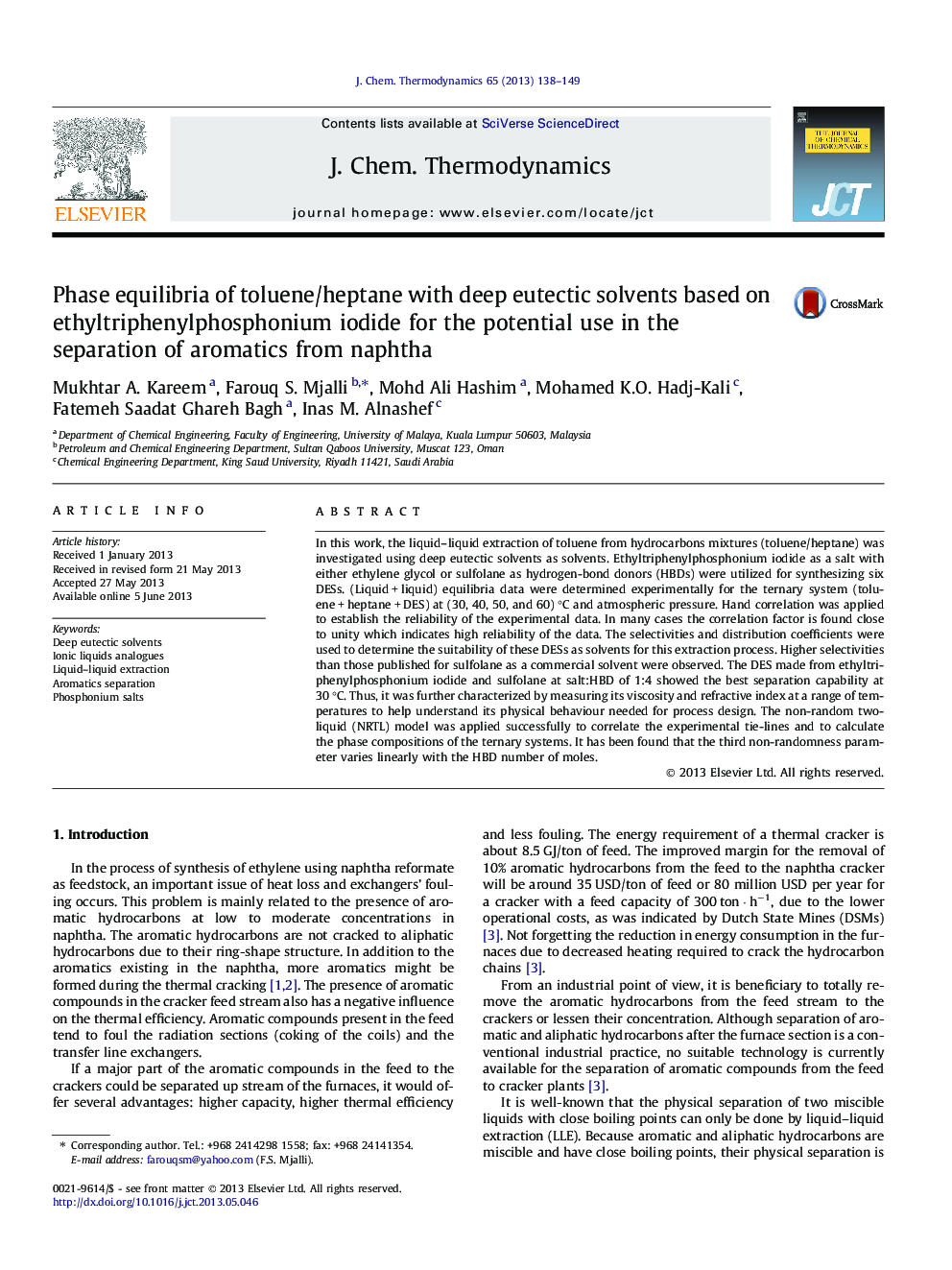| کد مقاله | کد نشریه | سال انتشار | مقاله انگلیسی | نسخه تمام متن |
|---|---|---|---|---|
| 215997 | 1426248 | 2013 | 12 صفحه PDF | دانلود رایگان |

• Ionic liquid analogues are introduced as potential replacements for ionic liquids.
• Deep eutectic solvents presented in this work were successful for extracting aromatics.
• Hand correlation was applied to ascertain the experimental measurements.
• The NRTL thermodynamic model was capable for correlating the LLE experimental data.
In this work, the liquid–liquid extraction of toluene from hydrocarbons mixtures (toluene/heptane) was investigated using deep eutectic solvents as solvents. Ethyltriphenylphosphonium iodide as a salt with either ethylene glycol or sulfolane as hydrogen-bond donors (HBDs) were utilized for synthesizing six DESs. (Liquid + liquid) equilibria data were determined experimentally for the ternary system (toluene + heptane + DES) at (30, 40, 50, and 60) °C and atmospheric pressure. Hand correlation was applied to establish the reliability of the experimental data. In many cases the correlation factor is found close to unity which indicates high reliability of the data. The selectivities and distribution coefficients were used to determine the suitability of these DESs as solvents for this extraction process. Higher selectivities than those published for sulfolane as a commercial solvent were observed. The DES made from ethyltriphenylphosphonium iodide and sulfolane at salt:HBD of 1:4 showed the best separation capability at 30 °C. Thus, it was further characterized by measuring its viscosity and refractive index at a range of temperatures to help understand its physical behaviour needed for process design. The non-random two-liquid (NRTL) model was applied successfully to correlate the experimental tie-lines and to calculate the phase compositions of the ternary systems. It has been found that the third non-randomness parameter varies linearly with the HBD number of moles.
Journal: The Journal of Chemical Thermodynamics - Volume 65, October 2013, Pages 138–149